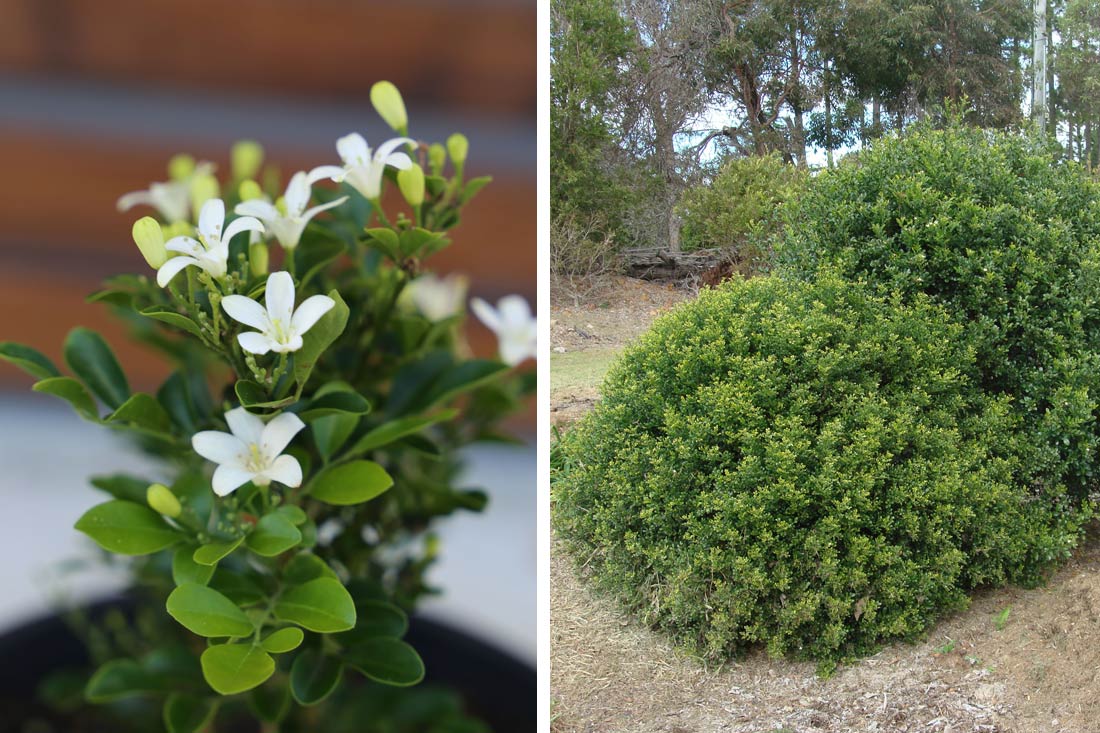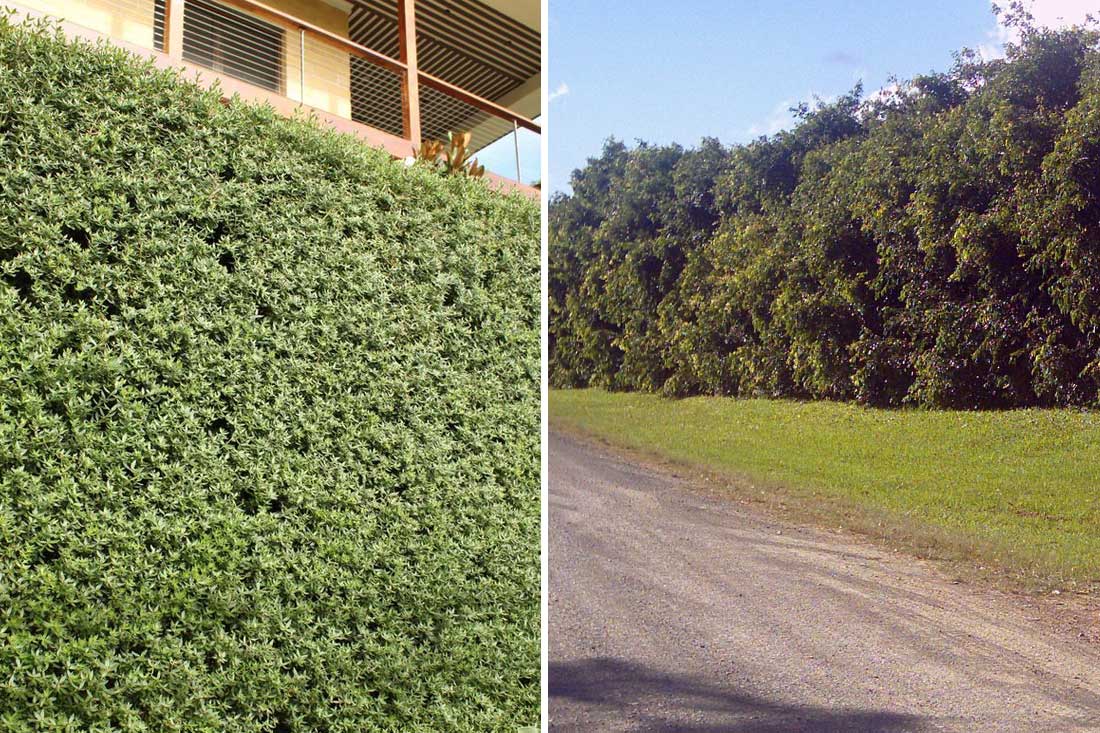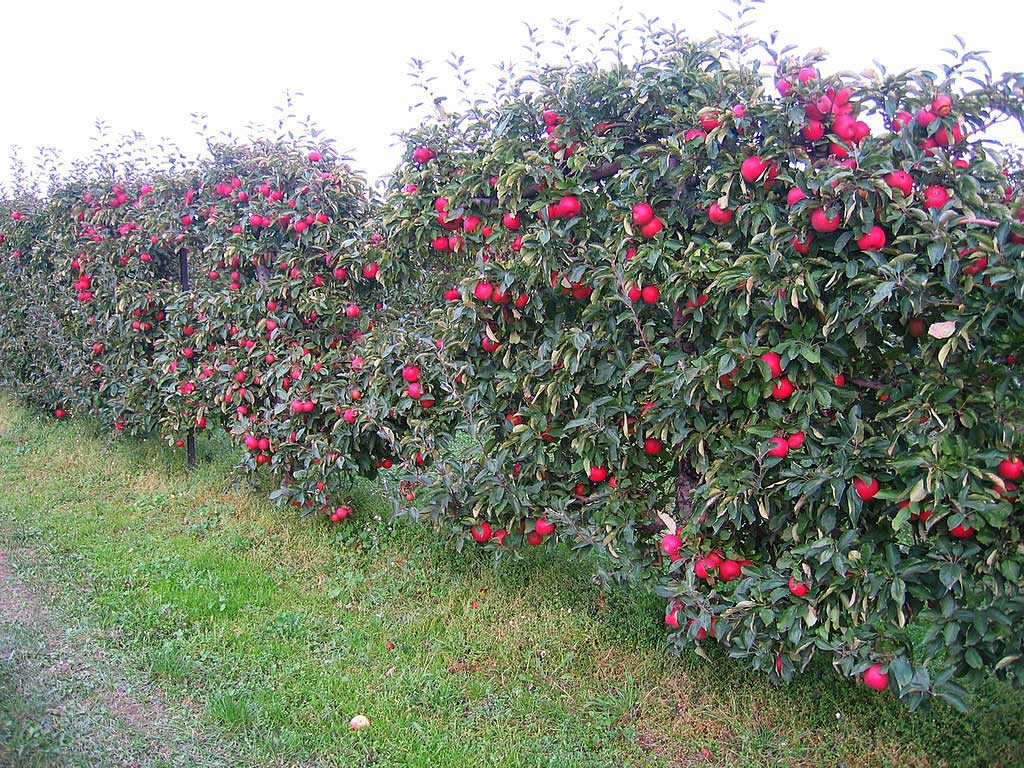Lilly pilly plants, known for their attractive foliage and vibrant berries, are a popular choice for gardens and landscapes. However, it’s not uncommon for gardeners to encounter issues with leaf loss in these otherwise hardy plants. If you’ve noticed your lilly pilly shedding leaves, there could be several reasons behind it. In this article, we’ll explore the potential causes and offer solutions to help you restore your plant to its full glory.
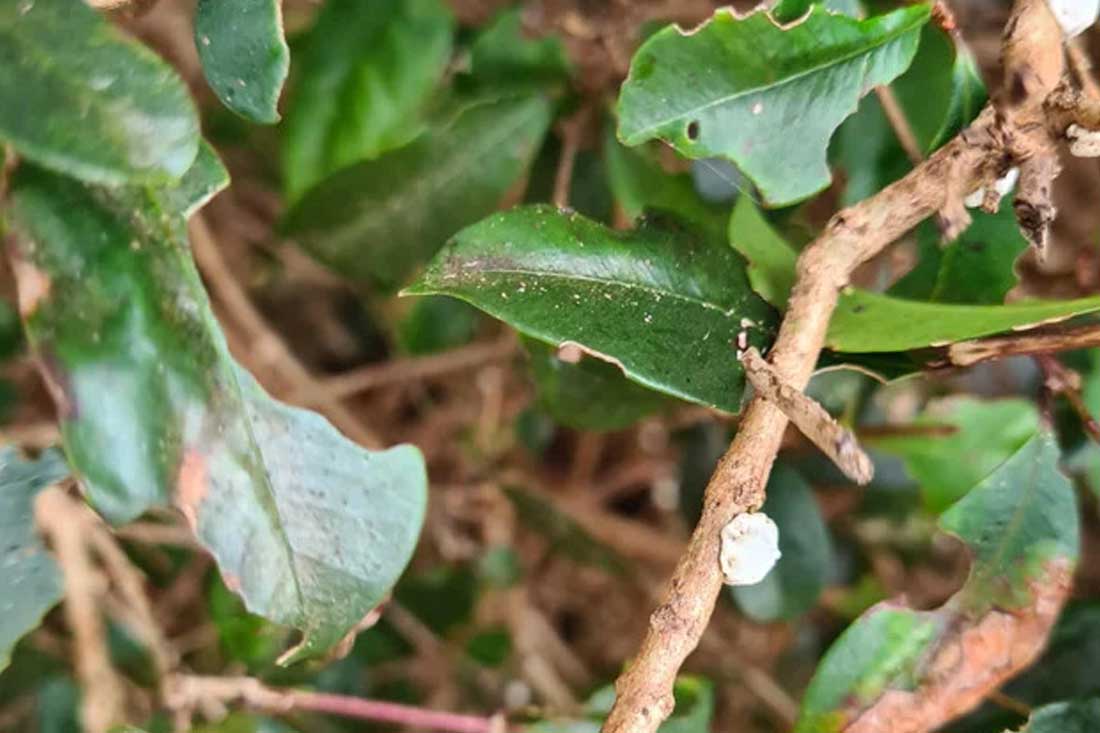
Why do lilly pillies lose leaves? There are a number of reasons, such as the infamous lilly pilly beetle. https://www.reddit.com/r/GardeningAustralia/comments/y4jfhy/what_is_killing_my_lilly_pilly/
Poor Plant Selection
Wrong Plant for the Position
One of the fundamental rules in horticulture is to put the right plant in the right plant. If you’ve put a lilly pilly in a position it can’t thrive, it’s never going to look as good as you want it to. Consider replacing weak lilly pillies with a stronger lilly pilly variety, or another species altogether.
Poor Genetics
All lilly pillies are not born equal. There’s a lot of genetic diversity between different species, and even between different varieties of the exact same species. Sometimes, a variety that’s a couple of dollars more expensive will be a lot tougher than your average lilly pilly. At Ozbreed, we’ve built our whole business around breeding stronger plants that don’t need babysitting, so keep reading to learn about some extremely tough lilly pillies.

Does your lilly pilly look like this good? If not, you might wish to replace it with a psyllid resistant variety like Straight and Narrow™ Syzygium australe ‘SAN01’ PBR Intended. https://www.ozbreed.com.au/plant-ranges/native-shrubs-groundcovers/straight-and-narrow/
Environmental Factors
Water Stress
One of the most common reasons for leaf loss in lilly pilly plants is water stress. This can occur due to both underwatering and overwatering:
- Underwatering: Insufficient water can cause the leaves to dry out and fall off. This could happen gradually, or rapidly during a dry heatwave.
- Overwatering: Excessive water can lead to root rot, which prevents the roots from absorbing necessary nutrients and moisture. Leaves will likely start to lose their vibrance, perhaps turn yellow, and then either fall off or die and stay attached to the plant.
Temperature Extremes
Lilly pilly plants can be sensitive to temperature changes:
- Heat Stress: Prolonged exposure to high temperatures can cause leaf drop.
- Cold Damage: Unexpected frosts or low temperatures can damage the leaves, leading to their loss.
Sun Exposure
The amount of sunlight your lilly pilly receives is crucial:
- Excessive Sunlight: Too much direct sunlight can scorch the leaves, especially when there’s a drastic and rapid change in the amount of light.
- Insufficient Light: Lack of adequate light can result in weak growth and leaf drop. Keep in mind that some lilly pillies can do remarkably well in low light conditions, while others struggle.
Wind Exposure
Strong winds can physically damage the leaves or cause the plant to dry out more quickly, leading to leaf loss.
Nutritional Deficiencies
Soil Nutrient Imbalance
A lack of essential nutrients can cause leaf drop in lilly pilly plants:
- Nitrogen Deficiency: Yellowing and loss of older leaves can occur if nitrogen is lacking.
- Other Nutrients: If the leaves go red or purple, this may be a case of a phosphorous deficiency (especially if “native” fertilisers are used – these plants prefer the full nutrient spectrum). Deficiencies in magnesium, potassium, or iron can also contribute to leaf loss.
Pests and Diseases
Pest Infestation
Pests can weaken your lilly pilly, leading to leaf loss:
- Sucking Insects: Psyllids are the most common type of sucking insect on lilly pillies, and they cause unsightly bumps on the leaves. Extreme infestations can weaken a plant, eventually leading to leaf drop. Predators such as ladybirds, lacewings and even birds can predate upon the various life stages of these pests.
- Calypso Beetles: Small, green beetles are the culprits behind the munching damage so common on lilly pilly plants. Predatory insects which are true bugs (such as assassin bugs) have a straw-like mouth that can pierce the hard shell of beetles.
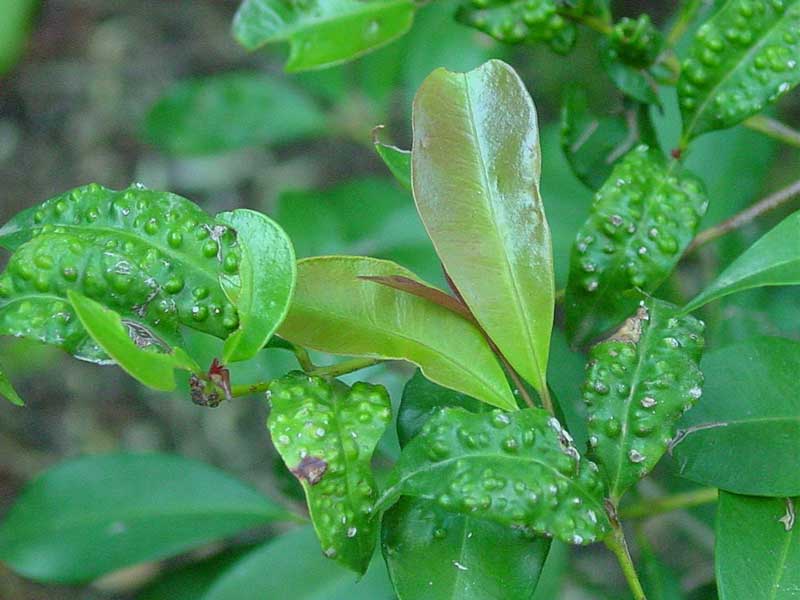
Psyllids cause lilly pilly leaves to look bumpy. https://www.flickr.com/photos/majik/4327351274
Fungal Infections
Fungal diseases can also be a culprit:
- Myrtle Rust: This is the big disease to watch out for in humid climates – if you see purple, yellow or orange parts on the leaf, you may consider replacing the plant with a resistant variety. Fungicides often cause more problems than they solve.
- Leaf Spot: Fungal infections can cause spots on leaves, leading to their eventual drop.
- Root Rot: Often caused by overwatering, this can significantly affect the health of the plant.

If your lilly pilly’s losing leaves and you can see advanced signs of a myrtle rust infections, you may wish to replace the plant with something stronger. https://commons.wikimedia.org/wiki/File:Myrtle_rust_on_lilly_pilly.jpg
Bacterial Infections
Bacterial diseases can cause discolouration and leaf loss, further stressing the plant. As a horticulturist and maintenance gardener of over 10 years, I’m more concerned about fungal diseases which are more common in lilly pillies from my personal experience.
Mechanical Damage
Girdling from Ties
Leaving ties or stakes on for too long can choke the stems, restricting nutrient and water flow, leading to branch death and leaf drop. If you see a definite point where the plant’s health drastically changes, pull back the foliage and check for old ties or a physical injury.
Physical Injury
Physical damage can also cause leaf loss:
- Pruning Damage: Incorrect or excessive pruning can stress the plant and cause leaves to drop.
- Animal Damage: Animals such as birds, rodents, or pets can damage the plant, leading to leaf loss.
- Other Mechanical Damage: Strong winds, vehicles, children and other pedestrians can all cause physical damage to plants which may result in leaf loss.
Soil and Root Issues
Poor Soil Aeration
Compacted soil reduces oxygen availability to roots, leading to root stress and leaf drop.
Root Bound
If grown in containers or constricted soil conditions, lilly pilly plants can become root bound, restricting their growth and causing stress-related leaf loss.
Lack of Drainage
If a lilly pilly is in a position lacking drainage, it will likely struggle. This can be due to heavy soil or simply nowhere for excess water to drain to. There are better plants for wet feet, such as certain Callistemon varieties.
Too Much Drainage
In general, lilly pillies prefer drought to flooding. However, if they can’t access enough moisture, they’ll inevitably struggle. If you have sand-dominant soil, try to add organic matter, kaolin clay, or quality water crystals to hold more water. Watch out for hydrophobicity, which is when natural waxes from organic matter can clog the gaps between large sand particles, preventing water from penetrating into the root zone. You can break these waxes down using a soil wetter or soap, but long-term you’re better off adding water crystals or kaolin clay which will prevent it happening again.
Chemical Sensitivity
Soil Contamination
The presence of harmful chemicals or pollutants in the soil can negatively affect the plant’s health, resulting in leaf loss. The same thing can happen when you over-fertilise.
Improper Planting Techniques
Planting Depth
Incorrect planting depth can stress the plant’s roots, leading to leaf loss:
- Too Deep or Too Shallow: Both can cause significant stress to the plant. We want roots in the ground, and stems and leaves in the air. This includes avoiding piling mulch around the stem.
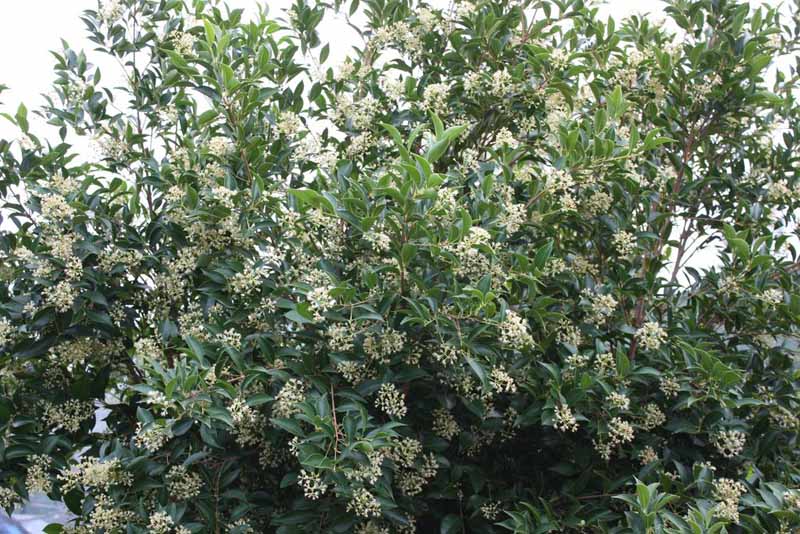
Choosing quality varieties gives you a lot more grace when conditions get tough. This is Sublime™ Acmena smithii‘DOW30’ PBR. https://www.ozbreed.com.au/plant-ranges/advanced-trees/sublime-acmena-is-a-mid-sized-tree-with-refreshing-lime-new-growth-and-dense-foliage-to-the-ground-advanced-trees-range/
Conclusion
Identifying the specific cause of leaf loss in your lilly pilly can be challenging due to the multitude of potential factors. By examining your plant’s environment, watering habits, nutritional status, and overall care routine, you can pinpoint the issue and take corrective action. Addressing these factors will help you maintain a healthy and vibrant lilly pilly, ensuring it thrives in your garden for years to come.



